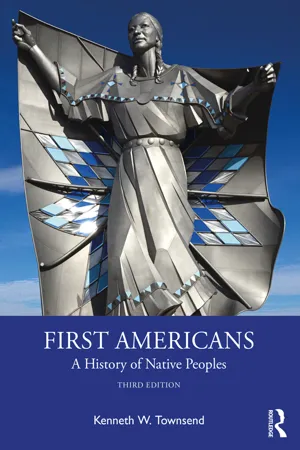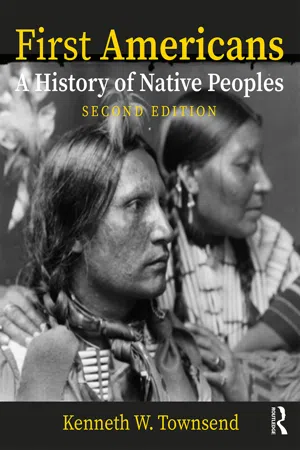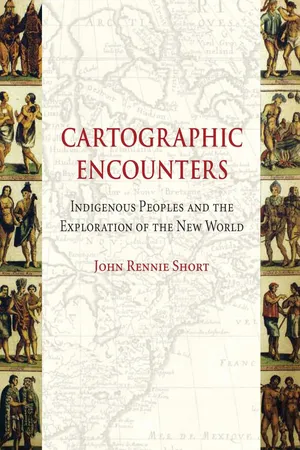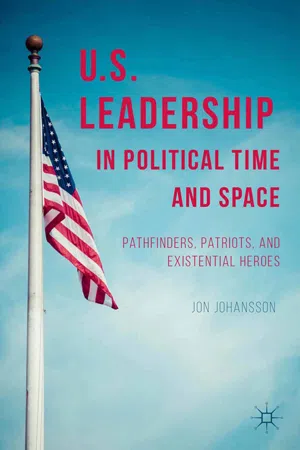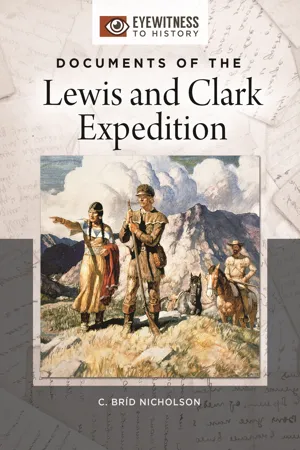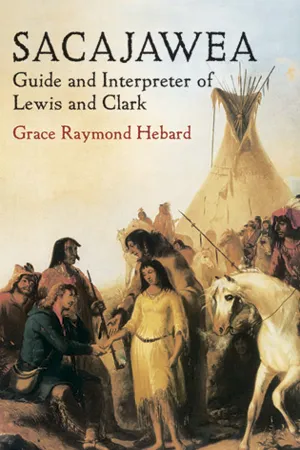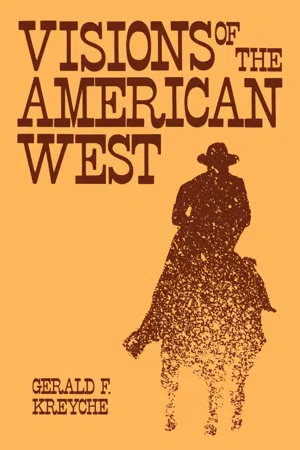History
Lewis and Clark Expedition
The Lewis and Clark Expedition, also known as the Corps of Discovery Expedition, was the first American overland expedition to the Pacific coast and back. Led by Meriwether Lewis and William Clark, the expedition took place from 1804 to 1806 and aimed to explore and map the newly acquired western territory of the United States, as well as establish trade with Native American tribes.
Written by Perlego with AI-assistance
Related key terms
Related key terms
1 of 4
Related key terms
1 of 3
9 Key excerpts on "Lewis and Clark Expedition"
- eBook - ePub
- Kenneth W. Townsend(Author)
- 2023(Publication Date)
- Routledge(Publisher)
The Louisiana Purchase, which was France’s 1803 sale of 800,000 square miles of land to the United States, doubled the size of the American republic for less than three cents per acre. An admitted lover of botany and geology and driven by a desire for an American westward empire, President Thomas Jefferson recruited Meriwether Lewis and William Clark to lead a Corps of Discovery to map and explore America’s new territory as far as the Pacific Ocean. Lewis and Clark’s expedition was not the first attempt to trace a northwestern land route to the Pacific. Alexander Mackenzie, a Scotsman employed by the fur-trading British North West Company, in 1789 journeyed westward across Canada to initiate fur trading operations with natives and search for the fabled Northwest Passage. He, instead, reached the Arctic Ocean. Not one to dwell on failure, Mackenzie in 1793 succeeded in completing the first overland crossing of the North American continent through Canada, but, again, he discovered no direct waterway to the Pacific Ocean. Russian merchants were also active, plying the western coast for sea otters since the 1740s. Americans and Europeans alike imagined a western territory beyond the Mississippi River that promised boundless opportunities. The Lewis and Clark Expedition (1804–1806) was organized and conducted with the same vision. Although the all-water route to the Pacific eluded them as it did other explorers, what the Corps of Discovery did accomplish amounted to a watershed in American history. Lewis and Clark filled their journals with maps, detailed information about the West’s rich potential in resources, and indispensable ethnographic information about the Native Americans they encountered. This information would prove critical to America’s effort to create a new empire in the West.President Jefferson instructed Lewis and Clark to negotiate trade alliances with native groups they encountered. If the United States intended to take over the trans-Mississippi West, it would need well-established arteries of trade with all native peoples and a foundation of friendship with native peoples. Lewis and Clark were to gather together the chiefs at the villages they encountered, appoint one or two “head chiefs” for negotiations, enter into discussions about changing geopolitical and trade alliances, and then dispense gifts to all chiefs. They carried with them a variety of tools, adornments, and other goods for gifting along with Jefferson’s “friendship medals” for the chiefs of highest standing. Alliances of trade with the western Indians, Jefferson believed, would lay the foundations for his “Empire for Liberty” in the opening of new lands to American settlers. - eBook - ePub
First Americans: A History of Native Peoples, Combined Volume
A History of Native Peoples, PowerPoints
- Kenneth W. Townsend(Author)
- 2018(Publication Date)
- Routledge(Publisher)
The Louisiana Purchase, which was France’s 1803 sale of 800,000 square miles of land to the United States, doubled the size of the American republic for less than three cents per acre. An admitted lover of botany and geology and driven by a desire for an American westward empire, President Thomas Jefferson recruited Meriwether Lewis and William Clark to lead a Corps of Discovery to map and explore America’s new territory as far as the Pacific Ocean. Lewis and Clark’s expedition was not the first attempt to trace a Northwestern land route to the Pacific. Alexander Mackenzie, a Scotsman employed by the fur-trading British North West Company, in 1789 journeyed westward across Canada to initiate fur trading operations with natives and search for the fabled Northwest Passage. He, instead, reached the Arctic Ocean. Not one to dwell on failure, Mackenzie in 1793 succeeded in completing the first overland crossing of the North American continent through Canada, but, again, he discovered no direct waterway to the Pacific Ocean. Russian merchants were also active, plying the western coast for sea otters since the 1740s. Americans and Europeans alike imagined a western territory beyond the Mississippi River that promised boundless opportunities. The Lewis and Clark Expedition (1804–1806) was organized and conducted with the same vision. Although the all-water route to the Pacific eluded them as it did other explorers, what the Corps of Discovery did accomplish amounted to a watershed in American history. Lewis and Clark filled their journals with maps, detailed information about the West’s rich potential in resources, and indispensable ethnographic information about the Native Americans they encountered. This information would prove critical to America’s effort to create a new empire in the West.President Jefferson instructed Lewis and Clark to negotiate trade alliances with native groups they encountered. If the United States intended to take over the trans-Mississippi West, it would need well-established arteries of trade with all native peoples and a foundation of friendship with native peoples. Lewis and Clark were to gather together the chiefs at the villages they encountered, appoint one or two “head chiefs” for negotiations, enter into discussions about changing geopolitical and trade alliances, and then dispense gifts to all chiefs. They carried with them a variety of tools, adornments, and other goods for gifting along with Jefferson’s “friendship medals” for the chiefs of highest standing. Alliances of trade with the western Indians, Jefferson believed, would lay the foundations for his “Empire for Liberty” in the opening of new lands to American settlers. - eBook - ePub
Cartographic Encounters
Indigenous Peoples and the Exploration of the New World
- John Rennie Short(Author)
- 2009(Publication Date)
- Reaktion Books(Publisher)
PART III | imperial cartographies18 Cut Nose’s sketch map, 1806. Passage contains an image
5 | Surveying the West: Lewis and Clark . . . and Others
The Lewis and Clark Expedition is a hinged event that swings from the colonial to the imperial cartographies of the western United States. The expedition began when the United States was still only a fledgling nation restricted to the eastern seaboard. The expedition opened up the West to subsequent exploration that allowed the full emergence of a continental United States. Lewis and Clark inaugurated an exploratory practice with imperial reach for the new nation, as the United States staked a claim across the great continent and set about peopling the territory and commodifying the land. In the wake of Lewis and Clark, the Republic extended beyond the original thirteen colonies, west across the Mississippi to the Pacific Ocean, south to Mexico and north to Canada. This territorial annexation also involved the land’s incorporation into national discourses of cartographic knowledge, scientific understanding, political control and economic calculation. The land required survey in all the subtle meanings of that term, including knowing, surveillance and control.Before Lewis and ClarkOn 20 June 1803 Thomas Jefferson sent a letter to Captain Meriwether Lewis outlining the goals of an expedition into the interior of the country. ‘The object of your mission’, it began, ‘is to explore the Missouri river, & such principal stream of it, as, by it’s course and communication with the waters of the Pacific ocean.’Much has been written about this expedition that travelled from St Louis through the Rocky Mountains to the Pacific and back; it is now represented as a foundational expedition in the history of the United States. There is a vast body of documentation; here I will limit my remarks to noting the Amerindian cartographic contribution, which was significant. At least 30 Native American maps have been identified in the records of Lewis and Clark. And even before they left Washington, Lewis and Clark drew upon a large measure of Native American geographic knowledge encoded into the various maps that informed and guided their journey.1 - eBook - ePub
US Leadership in Political Time and Space
Pathfinders, Patriots, and Existential Heroes
- J. Johansson(Author)
- 2014(Publication Date)
- Palgrave Macmillan(Publisher)
What is striking about the idea of a coleadership is that it is so profoundly un-American. The political system, at both federal and state levels, revolves around clearly identified leaders, presidents and governors. The idea of a copresidency, raised simultaneously as a potential benefit and a certain calamity during the Clinton era, was a repugnant idea to many Americans. Of course the idea of a shared command was even more anathema in the army. Rigid hierarchies and chains of command and responsibility didn’t allow for the potential diffusion of either. It is in that sense one of the most fortuitous leadership aberrations in all American history, but each man complemented the other, which is why a coleadership so spectacularly worked in this case. Clark had the more even temperament. He was, additionally, a far more skilled cartographer than Lewis. He had an easy but firm manner with men under his command. He also had, despite enjoying only a short, at most six-month friendship with Lewis, the latter’s utter confidence. There existed between the two men a fraternal bond that stayed with them for the rest of Lewis’s life. What is also surprising about such a novel arrangement (although hidden from public view as there could be only one formal leader of the expedition) is Lewis’s rare self-awareness that this command structure was optimal for their journey west. Whatever the thinking that underpinned Lewis’s chief innovation for an army-led mission, by the late spring of 1804, he and Clark—having finished their recruitment of men as well as their planning and logistics—set off from St. Louis, up the mighty Missouri River, determined to reach the Pacific Ocean.The Grand TraverseThe story of the Lewis and Clark Expedition is at its best a story of reaching out, of searching for an unknowable future that was within their grasp, but a future that would not yield herself easily to them. They were also, with every passing day, further and further from home—isolated in a fashion that perhaps only the great seagoing explorers during the seventeenth and eighteenth centuries and astronauts during the later part of the twentieth century could relate to because everything around them was an alien environment: the land, the people, and their customs. They were cut entirely adrift from the safety of familiar surroundings. Jefferson’s instructions may have set boundaries for Lewis, but they didn’t limit the possibilities of what might emerge before him or his expedition. One of the strands of this narrative of exploration and filling in space involves Meriwether Lewis’s ascent to heights of excellence as a leader; with Lewis identified here as the key individual, and crucial link to the mission’s designer, in a collaborative enterprise of monumental service to their president and to their country.Another point to make is to say that there is not just one story about the journey and its effects. There are many contested narratives about the Lewis and Clark Expedition and where one stands determines what one sees because for the Indians contact with Lewis and Clark would presage forces that would ultimately destroy their way of life. For the descendents of the many tribes that Lewis and Clark encountered—the Omaha, the Yankton and Teton Sioux, Arikara, the Mandan, the Shoshone, Nez Perce, and Clatsop tribes to name but a few of them—tears, rather than cheers, would follow. While Lewis and Clark generally experienced good relations with the tribes they encountered, because of a balance of forces, mutual self-interest, and their skill in fostering and then maintaining good relations, an armed standoff with the Teton Sioux and Lewis killing two Blackfeet warriors on the return journey notwithstanding24 - eBook - ePub
The Dover Anthology of American Literature, Volume I
From the Origins Through the Civil War
- Bob Blaisdell(Author)
- 2014(Publication Date)
- Dover Publications(Publisher)
MERIWETHER LEWIS AND WILLIAM CLARKCaptain Meriwether Lewis (1774–1809) and Captain William Clark (1770–1838) led the expedition President Thomas Jefferson commissioned through the War Department. His stated purposes were, among others, to explore the Missouri River to its source, and “to establish trade with the Native American people of the West and find a water route to the Pacific.” They were to collect information about the western part of the continent, about which Jefferson had so much curiosity. This excerpt from the original journals of the Lewis and Clark Expedition covers their trek from Three Forks (in today’s Montana) to Beaver’s Head (also in Montana), July 28–August 10, 1805. Along the way, they met Toussaint Charbonneau, a French-Canadian trader, and his now famous wife, Sacagawea, a Shoshone woman whose familiarity with native tribes and ability to communicate with them helped the expedition cross the Rocky Mountains and reach the Oregon coast in November. Lewis is a clear-eyed and clearheaded observer and excellent journal-keeper. Clark, for all his intelligence, was a note-taker and summarizer at best, and was at this point in his career a bewildered speller also unfamiliar with the proper use of punctuation. We have added capitalization after periods, silently added a dozen or two punctuation marks, but have otherwise left the writing just as it appears in Thwaites’s superb 1904 edition.From Original Journals of the Lewis and Clark Expedition(1804–1806)[LEWIS:] Sunday July 28th, 1805.MY FRIEND CAPT. Clark was very sick all last night but feels himself somewhat better this morning since his medicine has opperated. I dispatched two men early this morning up the S.E. Fork to examine the river; and permitted sundry others to hunt in the neigh-bourhood of this place. Both Capt. C. and myself corrisponded in opinon with rispect to the impropriety of calling either of these streams the Missouri and accordingly agreed to name them after the President of the United States and the Secretaries of the Treasury and state having previously named one river in honour of the Secretaries of War and Navy. In pursuance of this resolution we called the S.W. fork, that which we meant to ascend, Jefferson’s River in honor of that illustrious personage Thomas Jefferson. [the author of our enterprize. - eBook - ePub
- C. Bríd Nicholson(Author)
- 2018(Publication Date)
- ABC-CLIO(Publisher)
Epidemics in Colonial America. Louisiana State University, 1971.Josephy, Alvin M. Lewis and Clark through Indian Eyes: None Indian Writers on the Legacy of the Expedition. New York: Vintage Press, 2007.Ronda, James P. Lewis and Clark among the Indians. Lincoln: University of Nebraska Press, 1984.Russel, Carl. “The Guns of the Lewis and Clark Expedition.” North Dakota History, vol. 27 (Winter 1960).Slaughter, Thomas P. Exploring Lewis and Clark: Reflections on Men and Wilderness. New York: Vintage Press, 2004.Document 18
Letter from Thomas Jefferson to Meriwether Lewis (June 20, 1803)
Introduction: Instructions for the Expedition West
Jefferson was extremely clear that much of this journey was to be spent talking to and listening to the Native American population. Jefferson once again had taken the early advice of General George Rogers Clark here and made it clear that that he (Jefferson) was sending a purposeful small group of people so that this expedition would neither be considered an act of aggressive nor even ever thought of as an act of war. Jefferson wanted detailed information about the nations who lived in the West, but these instructions were set up so that respect would be given. This was not about war or takeover of land but about science and cooperation. Jefferson believed that the Native population could be persuaded to farm the land and to live with the people from the East who would move there and also farm, but for this to happen, this trip, which was the vital beginning of the process, had to be peaceful in every way.Science was also vital here. Jefferson demanded that details of weather, rivers, streams, mountains, plants, and animals were kept. This would be part of any maps that would be made, but it was also new information. Jefferson was aware that accepted and promoted science of the time thought that American nature was physically weak and unable to cope and was less than European animals. The only way that such science could be refuted was with many accurate detailed observations - eBook - ePub
Sacajawea
Guide and Interpreter of Lewis and Clark
- Grace Raymond Hebard(Author)
- 2012(Publication Date)
- Dover Publications(Publisher)
With the Lewis and Clark ExpeditionJourneyed westward, westward, Left the fleetest deer behind him, Left the antelope and bison, Passed the mountains of the prairie, Passed the land of Crows and Foxes, Passed the dwellings of the Blackfeet, Came unto the Rocky mountains, To the kingdom of the west-wind. – HiawathaCHAPTER I
With the Lewis and Clark Expedition
The treaty by which France ceded the Louisiana territory to the United States was signed April 30, 1803, and ratified by congress on October 26 of the same year. It was not until December 20, however, that the formal transfer of the territory, embracing approximately 1,020,571 square miles, actually occurred. The cost of this enormous empire was $15,000,000, or about two and one-half cents an acre.The American most interested in this transaction, and in many ways most responsible for it, was Thomas Jefferson. As early as 1786 we find him lending his support in Paris to John Ledyard, the “Connecticut Yankee” who dreamed of crossing Asia, sailing to the northwest coast, and making his way overland to the American settlements in the Mississippi valley. Six years later, more than a decade before the confirmation of the Louisiana purchase, Jefferson, then secretary of state, began to discuss the advisability of sending an exploring party to navigate the Missouri river to its source. His object was to open commercial relations with the Indians ; secure for our government some of the riches of the region which were being monopolized by traders from Canada; discover, if possible, a waterway to the Pacific; and open a route that would enable us to share in the trade of the orient.At that time, however, no one had the slightest conception of the vastness of the territory lying beyond the Missouri, although in 1792 Robert Gray, a ship captain from Boston, had sailed around the cape to the Pacific in the ship “Columbia,” and cast anchor in the harbor at the mouth of the river to which he gave the name of his vessel. From this time on many English and Yankee ships sailed along the northwest coast gathering furs, and the region about Vancouver island thus became definitely known. But the territory between the Missouri and the Pacific was as yet unexplored except as a few adventurous trappers had ascended the Missouri river a thousand miles or so and set their steel beaver traps along its tributaries. In 1793 Jefferson engaged the services of André Michaux, a French botanist, to explore the territory between the Missouri and the Pacific, instructing him specifically to “seek for and pursue that route which shall form the shortest and most convenient communication between the higher parts of the Missouri and the Pacific ocean.” 13 - eBook - ePub
- Gerald F. Kreyche(Author)
- 2021(Publication Date)
- The University Press of Kentucky(Publisher)
11 The phrase “manifest destiny” had yet to be coined but, as a belief that stimulated the epic adventure, it already was forcibly present.Both captains as well as the sergeants kept journals, and two privates also penned some notes along the way. On the day of departure, Clark wrote in his journal, “I set out at 4 o’clock P.M ., in the presence of many of the neighbouring inhabitents, and proceeded on under a jentle brease up the Missourie.”12 Only four miles were made that first day but they effectively served as a shake-down cruise for the approximately seven thousand miles to go. The men were fully aware that the expedition would take some two years; such a time away from loved ones was not unusual in those days. Whalers out of Boston commonly spent two years before the mast, and ships sailing from the East around the Horn to the Columbia and northward often were gone three years.Although reports of other expeditions indicated the vastness of the unexplored land Lewis and Clark were about to enter, no one was quite sure how great the distance was from one point to another, nor what lay between. The Missouri itself, with its serpentine turns and doublebacks, was twenty-five hundred miles long and wended its way through canyons, mountains, deserts, and breaks. After the Missouri, the trip to the Pacific still was considerable; the continental divide was only the highest of several parallel mountain ranges that had to be crossed. Even today, Europeans, and indeed many Americans who never have been West, fail to comprehend that the distance from Berlin to Moscow is the same as from Chicago to Denver, and Barcelona is no farther from Moscow than Chicago is from San Francisco.The voyage of discovery began with enthusiasm among all, and it is fair to say that, by and large, it retained that enthusiasm throughout. If ever there were an esprit de corps - eBook - ePub
Lewis and Clark
Partners in Discovery
- John Bakeless(Author)
- 2012(Publication Date)
- Dover Publications(Publisher)
chapter 9: The Corps of Discovery startsO N SUNDAY morning, May 13, 1804. everything was ready at last. Boats were loaded with provisions, ammunition, and Indian goods –“tho’ not as much as I think nessy . for the multitude of Inds . thro which we must pass on our road across the Continent,” the cautious Clark noted. Although they carried 21 bales of presents for the Indians, they had taken too many red and white beads and not enough blue ones, a shortage the disastrous nature of which did not appear until much later. At least there were fourteen barrels of “parchmeal,” holding two bushels each; twenty barrels of flour; seven barrels of salt, which ran out long before they reached the Coast; 50 kegs of pork; 50 bushels of meal; “Tools of every Description”; and abundant drugs and medical instruments.Tucked away in Private Cruzat’s personal baggage was one other article of equipment which surely no exploring expedition had ever carried before. Cruzat had taken along his violin—which would have delighted that enthusiastic fiddler, Mr. Jefferson. It turned out to be one of the most useful things the expedition carried. The Indians were astonished at the music. Some of them even said politely that they enjoyed it. And all the weary way, Cruzat and his fiddle furnished music for the square dances which, even without feminine partners, were the chief recreation of the Lewis and Clark Expedition. Rare indeed were the occasions when the men were too tired to dance.
Index pages curate the most relevant extracts from our library of academic textbooks. They’ve been created using an in-house natural language model (NLM), each adding context and meaning to key research topics.
Explore more topic indexes
Explore more topic indexes
1 of 6
Explore more topic indexes
1 of 4
